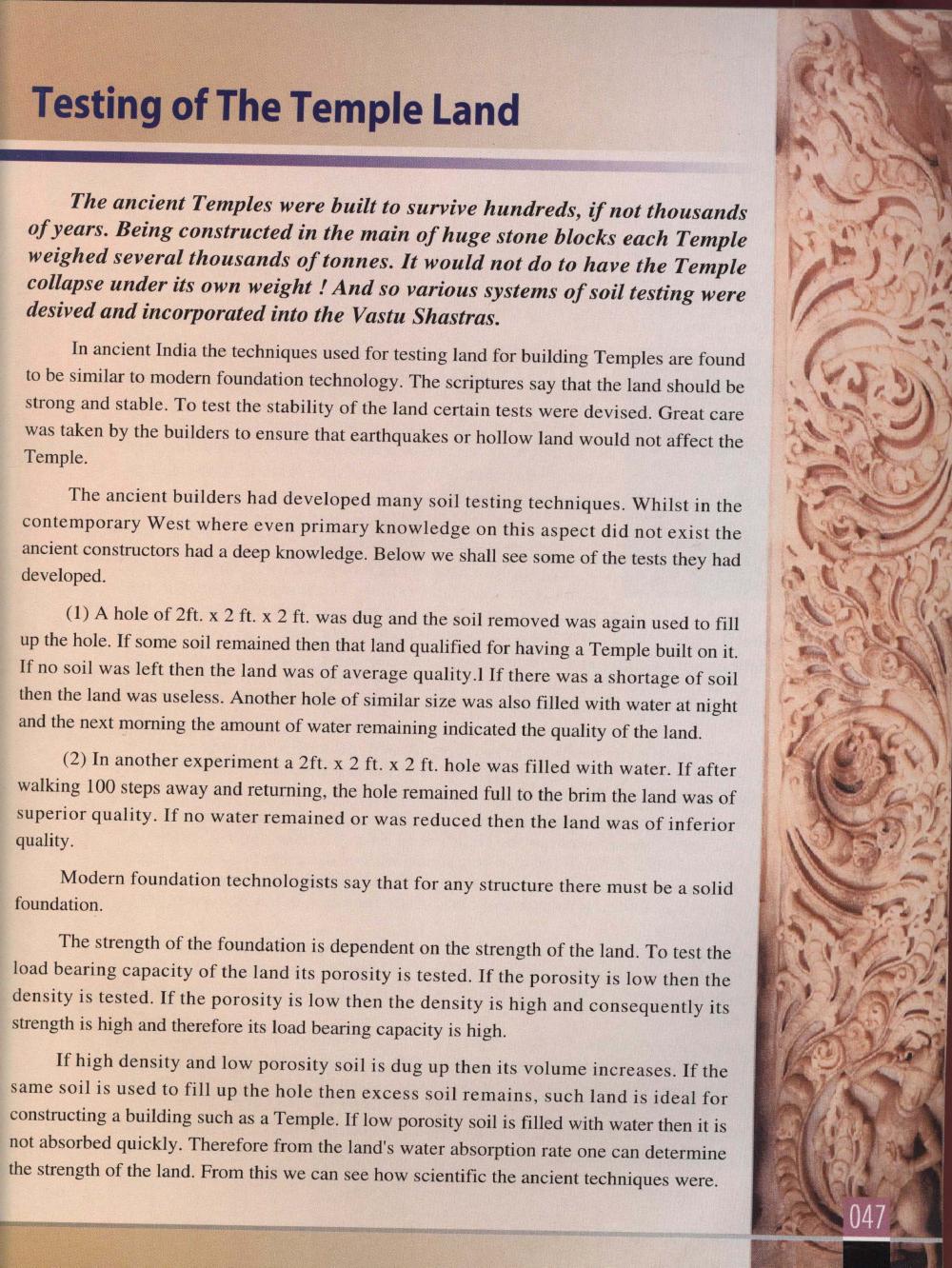________________
Testing of The Temple Land
The ancient Temples were built to survive hundreds, if not thousands of years. Being constructed in the main of huge stone blocks each Temple weighed several thousands of tonnes. It would not do to have the Temple collapse under its own weight! And so various systems of soil testing were desived and incorporated into the Vastu Shastras.
In ancient India the techniques used for testing land for building Temples are found to be similar to modern foundation technology. The scriptures say that the land should be strong and stable. To test the stability of the land certain tests were devised. Great care was taken by the builders to ensure that earthquakes or hollow land would not affect the Temple.
The ancient builders had developed many soil testing techniques. Whilst in the contemporary West where even primary knowledge on this aspect did not exist the ancient constructors had a deep knowledge. Below we shall see some of the tests they had developed.
(1) A hole of 2ft. x 2 ft. x 2 ft. was dug and the soil removed was again used to fill up the hole. If some soil remained then that land qualified for having a Temple built on it. If no soil was left then the land was of average quality.1 If there was a shortage of soil then the land was useless. Another hole of similar size was also filled with water at night and the next morning the amount of water remaining indicated the quality of the land.
(2) In another experiment a 2ft. x 2 ft. x 2 ft. hole was filled with water. If after walking 100 steps away and returning, the hole remained full to the brim the land was of superior quality. If no water remained or was reduced then the land was of inferior quality.
Modern foundation technologists say that for any structure there must be a solid foundation.
The strength of the foundation is dependent on the strength of the land. To test the load bearing capacity of the land its porosity is tested. If the porosity is low then the density is tested. If the porosity is low then the density is high and consequently its strength is high and therefore its load bearing capacity is high.
If high density and low porosity soil is dug up then its volume increases. If the same soil is used to fill up the hole then excess soil remains, such land is ideal for constructing a building such as a Temple. If low porosity soil is filled with water then it is not absorbed quickly. Therefore from the land's water absorption rate one can determine the strength of the land. From this we can see how scientific the ancient techniques were.
047




